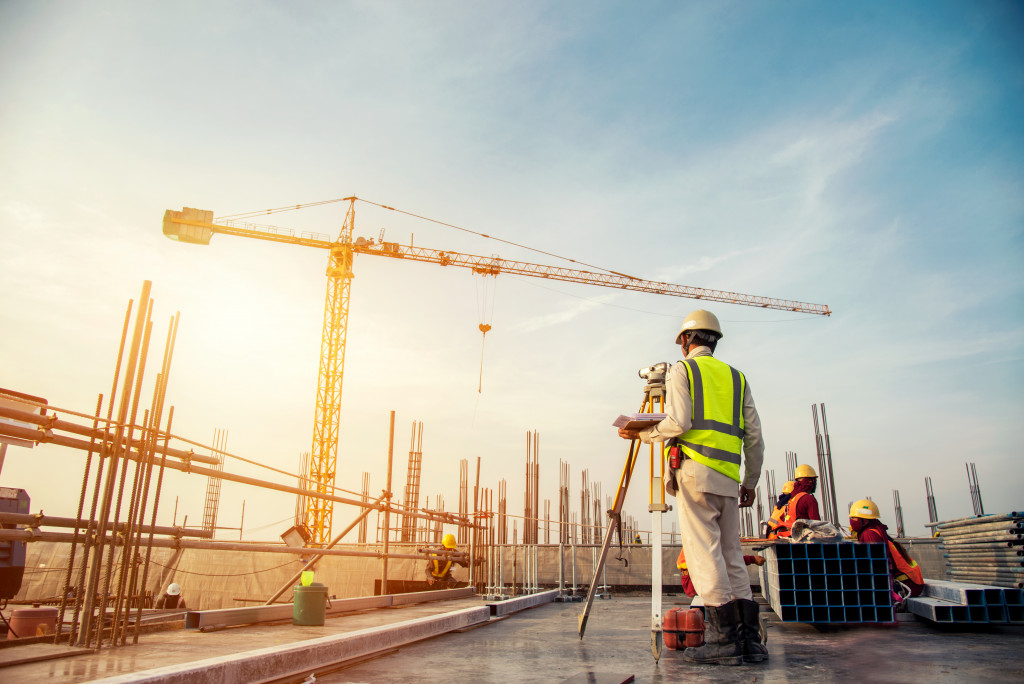- Assessing current processes and identifying pain points and challenges is essential to simplifying lifting and rigging tasks in construction businesses.
- Load securement tools like 2-leg chain slings, ratchet straps, and cam buckle straps can help improve efficiency and safety.
- Establishing essential safety protocols and best practices will help foster a safety-conscious culture on the construction site.
- Ensuring employees are properly trained on using personal protective equipment (PPE) is vital for safety.
- Prioritizing training on properly operating and maintaining construction equipment can reduce the risk of accidents and injuries.
Construction businesses often struggle with lifting and rigging tasks due to the complexity involved in the process. These tasks are vital for construction projects, and they require careful planning and execution to ensure that they are safe and efficient.
Lifting and rigging tasks are an essential part of construction projects, and they are involved in everything from setting up scaffolding to moving heavy equipment. These tasks require specialized equipment, trained operators, and a well-planned approach to ensure safety and efficiency.
Simplifying lifting and rigging tasks will not only improve the safety of your workers but also increase productivity, reduce downtime, and save money. By adopting a streamlined approach to lifting and rigging tasks, you can focus on other aspects of your construction project and achieve better results.
Assessing Current Processes
Simplifying your lifting and rigging tasks is to assess your current processes. You need to identify areas where you can improve efficiency, reduce waste, and increase safety. This could involve:
Identifying Pain Points and Challenges
One of the challenges of simplifying lifting and rigging tasks is identifying pain points and challenges that could affect your workflow. These could include issues with your equipment, inadequate training among your workers, poor communication, or lack of a structured approach to lifting and rigging tasks.
It is essential to identify these pain points and challenges early on in your project so that you can take corrective action and prevent them from affecting your workflow.
Evaluating Time and Resource Constraints
Time and resource constraints are another critical factor when simplifying lifting and rigging tasks. Many construction businesses have limited personnel, equipment, and time resources.
You need to evaluate these constraints and determine how you can optimize your workflow to get the most out of the resources you have. This could involve reorganizing your workflow, investing in new equipment or technology, or outsourcing specific tasks to third-party contractors.
Load Securement Tools
Load securement tools help construction companies enhance safety, efficiency, and productivity during lifting and rigging tasks. Here are some load securement tools that can help make construction work easier and more efficient for your business:
2-Leg Chain Sling
A 2-leg chain sling is a lifting device made of chains with two legs, designed to lift and secure heavy loads in construction tasks. It provides stability and versatility in various lifting applications.
Having a durable 2-Leg Chain Sling can significantly improve your construction business by enhancing efficiency, safety, and versatility in lifting and rigging tasks.
Ratchet Straps
Ratchet straps are widely utilized in construction for securing loads to trucks, trailers, or other vehicles. Their ratcheting mechanism allows for easy tightening and securing of heavy materials.
Load Binders
Load binders are essential for securing loads fastened with chains. They tighten the chains to create tension, ensuring the load stays secure during transportation.
Cam Buckle Straps
Cam buckle straps are lightweight and easy to use, making them ideal for securing lighter loads in construction projects. They are particularly useful for bundling and organizing materials.

Essential Safety Protocols and Best Practices
Safety protocols and best practices can create a safer work environment for your employees and reduce the risk of accidents and injuries on your construction site.
Regular safety training and reinforcement of safety procedures will help foster a safety-conscious culture within your construction business.
Personal Protective Equipment (PPE)
Ensure all employees are trained to properly use personal protective equipment, such as hard hats, safety goggles, gloves, and steel-toed boots. Make it standard practice for workers to wear the required PPE while on the construction site.
Hazard Communication
Implement a comprehensive hazard communication program to educate employees about the potential hazards they may encounter during construction activities. This includes providing clear labeling, Safety Data Sheets (SDS), and training on handling hazardous substances.
Fall Protection
Emphasize the importance of fall protection measures, especially when working at heights. Provide proper training on using safety harnesses, guardrails, and safety nets to prevent falls and minimize the risk of serious injuries.
Equipment Operation and Maintenance
Prioritize training on the proper operation and maintenance of construction equipment and machinery. Ensure that only trained and authorized personnel operate the machinery, and conduct regular inspections and maintenance to keep equipment in safe working condition.

Simplifying lifting and rigging tasks is vital for the success of your construction project. You can achieve optimal performance and improve safety by streamlining your workflow, identifying pain points and challenges, evaluating time and resource constraints, and establishing a maintenance schedule.
By adopting a proactive approach to lifting and rigging tasks, you can achieve better results and save time and money in the long run.
